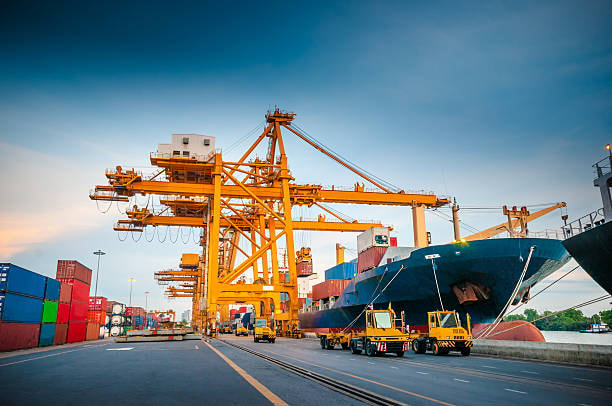
Meta Description: Find out all the insights of knowing about port to port shipping, port authority types of ports, logistics setup, and how to rationalize the international freight operation to achieve the best efficiency and lowest cost.
Port to port shipping is also the backbone of international trade, as it links the markets of the world to each other using advanced logistic services of the maritime industry, including inland ports . In the ocean freight transportation, port to port shipping means the second leg of the whole shipping process. It means the way merchandise is shipped in shipping containers between the port of starting point and the destination port. This is an important aspect of supply chain management that any business should understand so that it can maximize its international freight process and work down on its costs.
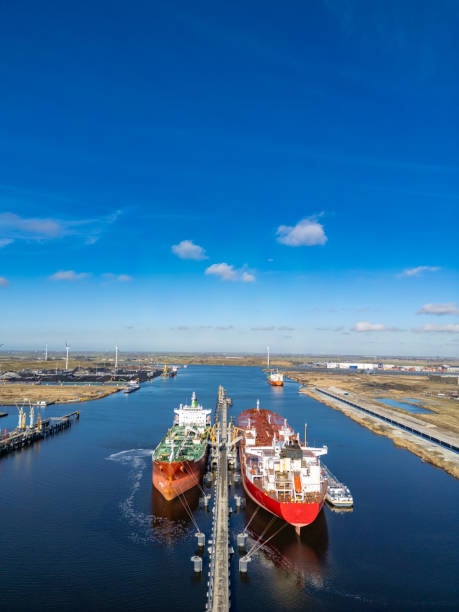
GWT Worldwide is a company specializing in offering of logistical services including quality port to port shipping services at the Shenzhen Guanwutong International Freight Forwarding Co., Ltd. Hastings, as a professional logistics service provider, offers quality and affordable freight forwarding services with a global network of trusted partners to improve your cargo delivery efficiency in terms of the origin-destination.
Understanding Port to Port Shipping Fundamentals
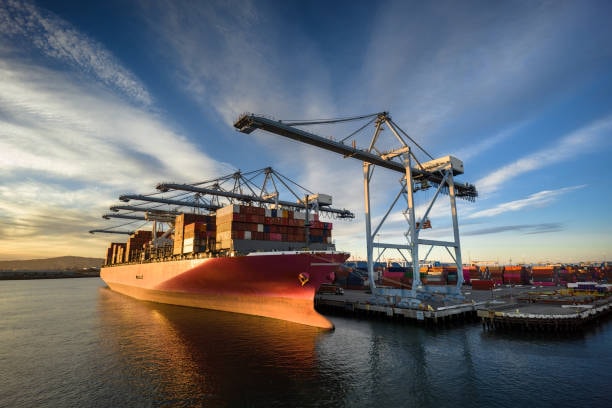
Port-to-port shipping (PTP) refers to transport services of delivery of goods between the port of origin and the port of destination, which virtually involves the center leg of the entire logistics process. This mode of transportation consists of shipping by sea which is a streamline mode where the responsibility on the cargo passed among various parties at designated stages of the shipping voyage.

The port to port model also differs with door to door services because in port to port the freight forwarder is only left with the responsibility of managing ocean transit. A fundamental mode of service available in the international freight forwarding industry is port-to-port that entails the movement of items between two ports, contrasting with door to door shipping . Unlike ドアツードア service, port-to-port, the role of a freight forwarder is reduced to organizing the moving of the cargo across the ocean, with the point of the departure to point of the arrival.
This mode of transportation has the following benefits to firms that have already developed internal transportation systems or one that operates the independent part of the logistics itself. Firms are able to have more control over on-carriage and pre-carriage arrangements and at the same time access expertise in maritime shipping of the ocean segment of their shipments.
Key Components of Port to Port Operations
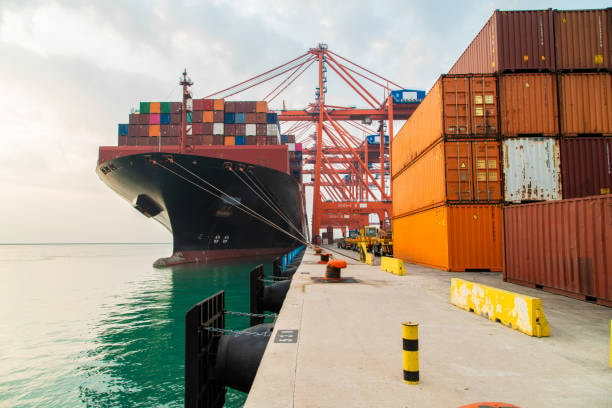
Port to port shipping is a complex exercise that has several important elements that collaborate to achieve cargo transportation. It all starts at a port of loading (POL) where the goods are shipped into a ship, safely guarded, and prepared to be transported. At the loading point, consignments destined to the same destination available in the entire country at a specific time are grouped.
One of the basic tenets of the modern work of the port is container handling. Containers should be packed well, recorded and adequately staged to facilitate loading to vessels. Standardization of containers size and clear procedures in handling the containers has brought a revolution in international shipping and port to port operations are more predictable and efficient.

Another vital aspect is documentation management, which includes bills of lading, customs documentation, and cargo manifest. These paper packages come along with the cargo and allow adequate identification of the cargoes, verification of the ownership and adherence to international trade laws.
The monitors and cargo tracking systems enable real time visibility of the ocean transit track and enable the shippers and consignees to track the shipments progress and plan the arrival in the destination port.
Types of Ports in Maritime Shipping

Learning the types of ports, including cargo ports, is vital to the choice of suitable shipping options. Depending on the kind of shipment that is being transported, the port can be classified as bulk port, container port and all in one port. The facilities and resources on the ports might vary. All the ports give different types of infrastructure and facilities that are oriented to the different types of cargo.
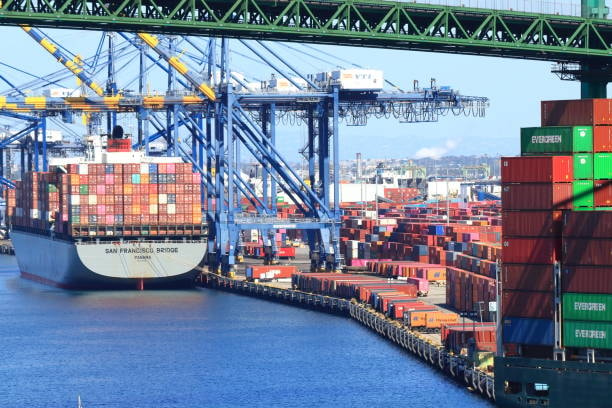
The general type and most often encountered is container ports and cruise port used in manufactured goods and general cargo. A container terminal is a container port or a container terminal, in which container cars are switched among vehicles of transport, in order to be subsequently transported. These terminals have advanced crane operations, container yards and automatic handling devices to support effective operations with containers.
Bulk ports deal with such commodities as grains, coal, oil and other raw materials and they ship unpackaged commodities in bulk quantities. These ports have dedicated loading and off-loading facilities like conveyor systems, pipelines and bulk handling cranes.
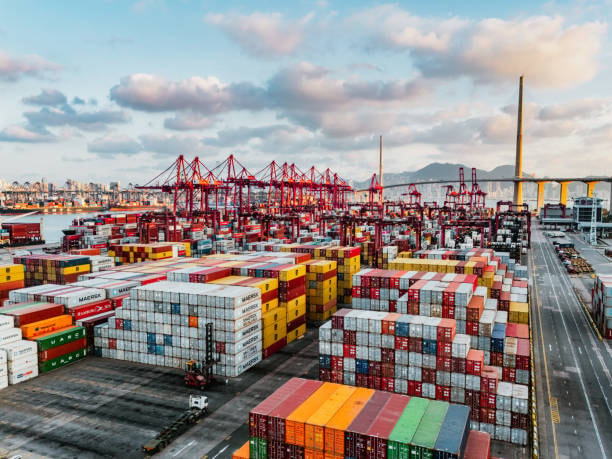
Break bulk ports deal with items whose cargo cannot be containerized as well as heavy machinery, project cargo and oversize equipment. It is a special facility and so there is specialized lifting equipment and highly skilled people needed to handle much complex loading and offloading.
Container Shipping and Port Operations
International trade has evolved to be container shipping, which has provided international trade with uniformity in shipping container handling, as well as efficiency. High technology in modern container ports uses automated stacking cranes, terminal operating system, and real-time tracking features to handle a large number of containers effectively.
A port is a crucial link in global supply chain through which goods are loaded/discharged as a means of linking sea transport with land-based logistics as a means of onward cargo transportation. Ports are the connecting point of the ships, the trucks and trains, making exchange of goods in the supply chain to flow smoothly.
The origin of the containerization process starts with cargo consolation whereby goods are packed in to standardized containers. They are next hauled to the port of loading where they are screened at the security checks, verified documentation and customs clearance are made after which they are finally loaded into the vessels.
Container tracking systems offer an end-to-end visibility, which enables the stakeholders in monitoring the status of containers, their location and expected times of arrival. This technology promotes more planning and coordination of the players in the supply chain.
Port Infrastructure and Terminal Types
The infrastructure of ports is quite different depending on the nature of cargo and geographical aspects of a certain location. Terminals fall under three broad categories; General cargo. Cargo which is unitized, can be transported in batches and could be dealt with by three types of specialized terminals, break-bulk terminals, neo-bulk terminals (e.g. car terminals) and container terminals.
The facilities in container terminals are advanced with deep water terminals to enable large container carriers to be accommodated, wide container yards besides intermodal networks to transfer cargo to trucks and trains. Rubber-tired gantry cranes, automated guided vehicles and ship-to-shore cranes are used in these terminals to maximize the container handling processes.
Ports Warehouses are often used to temporarily store cargo that is either awaiting manifestation or is awaiting clearance by the customs. The contemporary warehouses in modern port have climate control system, security and inventory management technology that makes cargo integrity and efficient processing.
Intermodal connectivity is a crucial point of port infrastructure, which provides smooth transition between the maritime, rail and truck transport. Intermodal connections are important to ports as ports with excellent intermodal connections will enjoy a competitive advantage to supply chain optimization because it will be possible to process cargo more effectively.
Benefits of Port to Port Shipping
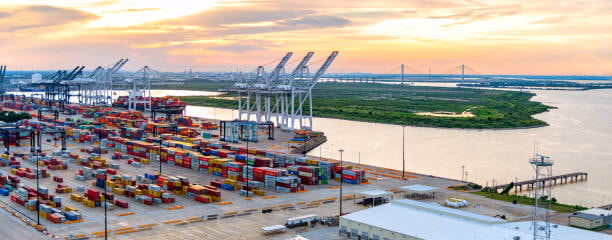
There are a lot of benefits of port to port shipping when it comes to businesses that are in need of flexible and cheap shipping. The most obvious advantage is cost optimization because a shipper will be able to negotiate competitive 海上輸送 rates on the ocean leg but reserve control over inland transportation organization which can be more cost-effective due to local providers.
Another major benefit is flexibility where businesses are able to design pre-carriage and on-carriage services on the basis of individual needs. The first and last mile of delivery could be to the company transportation network, the carrier of choice at the designated local destination, or specific handling services.
Advantages of risk management are founded on the laws that are clear on the issue of responsibilities among various service providers. The shippers are aware of the specific party, which should deal with every part of the transportation process, so with the insurance and liability become much easier.
When the inland legs of business shipments, including dry port options, are under the control of the business, the possibility of incorporating specialized handling capabilities is easier. This is especially useful in cargo that needs specialized equipment, certified drivers, or needs particular routing.
Challenges and Considerations
The idea of port to port shipping has some drawbacks that the businesses should pay attention to. The more parties involved in the transportation, the more its coordination is complex, though effective communication and documentation management of the transportation process should allow smooth operations.
Procedures of customs clearance may turn to be more complicated when the duties are distributed among various service providers. Companies should be confident that there is a good liaison between ocean and on-land transport providers to eliminate cases of delays and subsequent expenses.

The insurance cover is an aspect that needs to be given a lot of deliberation so that no part of the transportation process will be uninsured. The companies should also ensure that there are no loopholes in the coverage between various providers of services and part of transport.
The management of documentation becomes of importance given that the number of parties involved in handling cargo and transfer of documentation varies. Correct procedures should then be implemented that should ensure proper and just in time document transmission with all the parties involved.
Selecting the Right Port to Port Provider
To select the correct port to port shipping provider, a number of factors have to be considered. The performance indices, customer referral and operational capacities of the major ports should be evaluated to gauge service quality. The logical way to do this is in terms of the selection of the providers who must have had a record of demonstrating on time performance, sound cargo handling procedures and a good communication regime.
Network coverage is a significant choice criterion, especially to those businesses that ship to more places. With wide networks and good terms with local agents, the services of the providers are more flexible and reliable in different markets.
The technological capabilities allow more visibility of shipments, documentation management and communication with the operations as it goes through transportation. Present-day vendors are expected to provide online tracking services, online documentation, and status updates on the fly.
Monetary security and insurance guarantee, that suppliers will be able to meet its commitments, including proper liability to cargo damage or loss. Before the companies commit themselves in service agreements, they should check the credentials of service providers and check their level of insurance covers.
Documentation and Customs Procedures
Documentation is the key to the effective iterations in the port to port shipping. The bill of lading is the major transportation agreement and evidence of cargo reception needing the proper filling as well as endorsement to receive cargo upon delivery port authorities.
The commercial invoices and the packing lists, along with any required security fee, are imperative to act as guidance to the customs to value the items and determine the classification of a cargo port facilities
. To facilitate an eased movement of the cargo through the customs offices, such documents should correctly identify the cargo contents, values, and clarifications warm water ports.
Some commodities may need export and import license; this creates a need to coordinate the shippers, freight forwarders and customs authorities. Businesses ought to have all the right rules and regulations followed in shipping either by acquiring the right permits fishing port.
The process also differs according to the country of destination and customs clearance states that goods are processed and at times, documentation and payment of duty and taxes are required as well as adhering to imported guidelines cruise ship. It would be beneficial to deal with professional customs brokers to overcome complicated clearance procedures and reduce delays cargo ships.
Technology Integration in Port Operations
The port operations currently employ the technological modernisation in ensuring efficiency during the shipping process, security, and visibility. Terminal operating systems plan the operation of cranes, movement of containers and the cargo scheduling at a port to enhance productivity of the port and reduce waiting time of the vessel ports play.
RFID and GPS tracking allow real time location of containers to be known and helps in inventory management and in deterrence of theft. Such systems as well allow automation of the gate operations and that they save on the manual processing twenty foot equivalent unit.
Information exchange with ports, shipping lines, customs authorities and logistics providers is made easy through electronic data interchange (EDI) systems. This coordination saves papers, it saves errors and speeds up the time at which the cargo can be received and processed warm water port.
Machine learning and artificial intelligence use cases to improve the efficiency of port activity by means of predictive models, recommending solutions, and even pattern recognition. These are the technologies, which help ports to predict congestion and better allocation of resources as well as overall efficiency of operations inland port.
コスト最適化戦略
Port to port shipping needs strategic planning and market knowledge in order to ensure effective optimization of costs. The savings that may accrue out of consolidation of containers are high because of bulk use of containers and reduction of shipping costs per unit of goods ships load.
Season planning enables businesses to get the benefit of change in rate and availability during different seasons. Knowledge of high season and low season shipping allow one to negotiate better rates and plan a service level.
A web-based route optimization supports the process of cost-effective route optimization and is based on such factors as the speed of transit, the productivity of the port, and the overall cost of logistics. In some cases, alternative routing might provide cost-saving despite the increased transit time.
Volumes guarantees can also provide preferential rates as well as assured space allocation especially when there is peak shipping situations or during space bottlenecks. Long-term contracts grant stability of the rates and service assurances under stable shipping proportions.
Environmental Considerations and Sustainability
The practice of Green Shipping has gained more significance in the practice of maritime shipping. To minimize the emissions produced and the environmental effects, modern ships operate with the help of new technologies in engines, new fuels, and more efficient routes.
Green activities in port operations include shore power connections to the ships, electric cargo handling equipments and installing renewable energy systems. All these standards will decrease the number of emissions at ports and meet the overall goals of environmental sustainability.
Carbon footprint reporting and measurement help companies monitor and minimize the environmental effects of their shipping activities. Most firms have adopted environmental standards and engage their suppliers who agree with their environmental principles.
The promising green future of maritime shipping is alternative fuel like liquefied natural gas (LNG) and hydrogen. Implementing such technologies in an early stage can create competitive edge as well as be environmentally forward-looking.
Future Trends in Port to Port Shipping
Blockchain technology, along with the use of artificial intelligence and Internet of Things (IoT), is still causing the restructuring of port to port shipping. These technologies will enhance transparency, less paperwork and enhanced security along the shipping process.
The growth of automation in port businesses involves autonomous cars, robot-enabled cargo loading and offloading and AI-based decision-making. All these developments will enhance efficiency of operation at work, cut down human costs and errors.
The use of cleaner technologies, alternative fuels, and carbon-free shipping; should be part of the trend caused by sustainability measures. Legal pressure and customer pressure will speed up the change towards more sustainable shipping practices.
Integration of the supply chain will be increased and ports will act as data centres that can coordinate the work of whole supply networks. Predictive analytics and the ability to share information in real-time will allow managing the supply chain more promptly and efficiently.
結論
Port to port shipping is a basic part of international trade that gives enterprises flexibility, cost saving means and option of specialized services. The availability of this shipping method can only succeed when the provider is properly chosen, the documentation is managed properly, and when one plans strategically to gain the maximum benefits and give minimal risks. The market of port to port shipping will develop to provide even more efficiency and environmental responsibility with further development of technology and increased significance of sustainability.


Thank you for reading!
Have questions, corrections, or better ideas? We’d love to hear from you!
We value every piece of feedback and promise to reply within 24 hours. Let's make this guide better together!
Note: Spam comments will not be published.